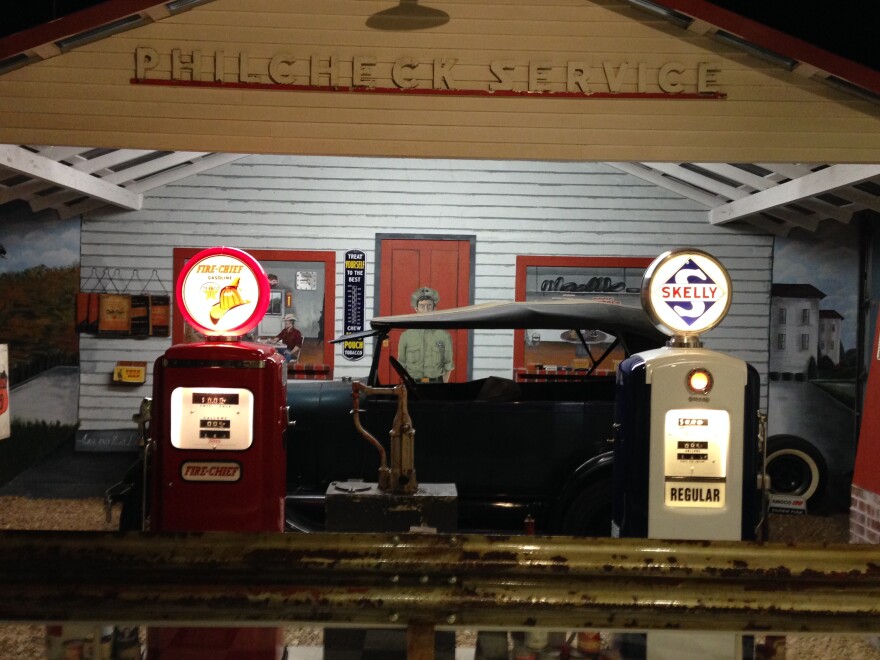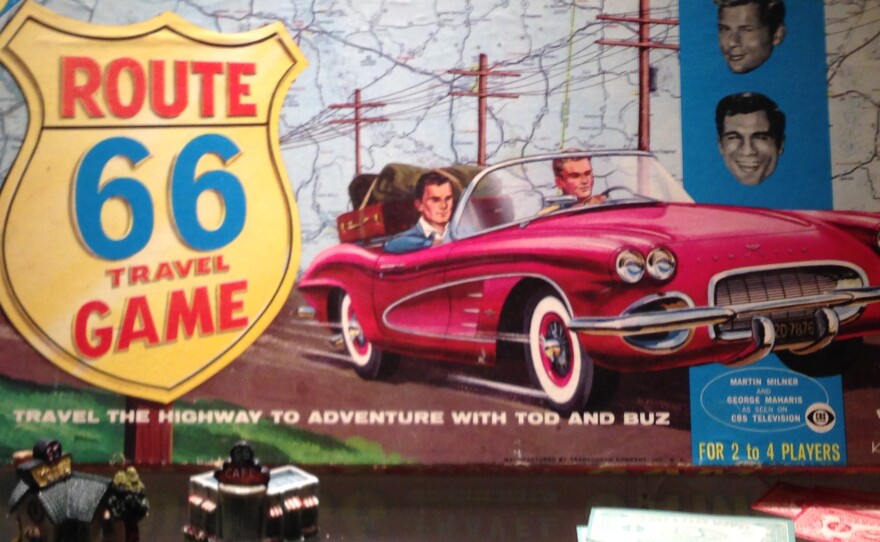After taking you on a short whirlwind tour of some of the preservation efforts going on here in the Springfield area to commemorate U.S. Route 66 (see story "Keeping the Legacy of Route 66 Alive in Springfield"), we're now going to travel up the road apiece--about 50 miles northeast of Springfield along Interstate 44, but along a path that would have utilized Route 66 at one time.
We're visiting Lebanon, Missouri--specifically, the Lebanon-Laclede County Library on Jefferson Street/Highway 32, just a few blocks after you turn off I-44 at exit 129. It's been this location--a former K-Mart store--for a little over ten years. At the time the Library relocated and the building was being rehabbed for their use, the idea for an in-house Route 66 museum came up. That's according to Mark Spangler, Curator of the Route 66 Museum and Research Center in Lebanon. He's been there about five years.
"It was far enough back that communities were starting to become re-interested in Route 66. It was always a focal point of this community, but as far as the history of it, it was trying to die off. And some people just would not let it, and this was one of those communities. Enough people realized the importance of it, that it was something that we could offer to not only our own people but the world at large. So the vision for the museum came up to be included in the Library, and it seemed to fit with the purpose of the Library to educate, inspire and entertain in a way other than just books. So it's a good fit with the Library, and has been supported throughout that time and has simply moved forward ever since."
Spangler continues, "We do have a good core collection of research materials, but people seem to be more interested in the visual components of it. The average person just wants to get a taste of it. The research component is there, but the museum and the exhibits are the focal point actually." When asked to estimate the size of the collection Spangler demurs. "Couldn't give you a number, actually. Thousands of pieces obviously. We have a map collection alone that has several hundred maps in it; and we have things as small as ink pens and matchbook covers that were advertising pieces... postcards."
Spangler feels the best asset in the Museum's collection has been the donation of nearly the entire research collection of maps, old tour guides, early AAA guidebooks and so on, that had been accumulated by James Powell, the founder of the Missouri Route 66 Association. He adds, "we've had researchers that were looking for some of the early Blue Books for specific advertising items in them. They had checked the Smithsonian, and actually found it here. The Smithsonian did not have it."
The museum is, as Spangler admits, "not a huge place." They've been allotted about 3500 square feet in the Library building, and he's working hard to refine and maximize that space. It's a self-guided museum experience--"as long as the Library is open, the Museum is open. And it is free of charge, there's no admission fee to come in." (Library hours are Monday-Thursday 8am-8pm; Friday and Saturday 8am to 5pm; closed Sunday and holidays.)
There are three full-sized "vignettes" within the space: two glassed-in mockups of a 1940s-style roadside diner and a typical roadside motel cabin of the period. But when you first come into the Museum, on your left is the first vignette, and it's a real eye-catcher. It depicts the front of a service station, with two gas pumps and a 1930 Model A Ford.

The car and gas pumps are borrowed, but Spangler says "the pumps, I think, might get to stay--we're working with the person who has loaned them to us. I think (he) may actually give them to us before too much longer. The service station has always worked well, that's always been a favorite. It came together really nicely. We've never intended just to have a 'snapshot in time'. We've always intended to just depict what you might find at a service station throughout time." He says the displays in the Museum can and will be changed and modified as time goes on. "That will always be the case. Everything we do here in the Museum, we understand that it may last for 10 or 15 years, it may last forever. But we will never shy away from changing and evolving."
Asked what Lebanon's role in the Route 66 story was and is, Mark Spangler says it's "just an important piece to it. We were like so many communities--we were just part of the Main Street of America, just like hundreds of others were. But we did have places in Lebanon that were as good as you could find anywhere, whether it be Chicago, St. Louis, Los Angeles. We had roadside accommodations that were unmatched. And that's what we're proud of."
As interest in historic Route 66 has grown, Lebanon has made improvements to the original 66 corridor through town. And like Springfield, they're planning a pull-off roadside park devoted to Route 66. It will be built and maintained by the Lebanon Parks and Recreation department, says Mark Spangler. "So hopefully within the next year or two, we will finally have our pull-off park that will be another component of the route here in Lebanon."




